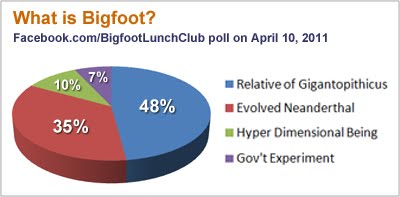Neanderthals Lasted Longer than Previously Thought
Posted by: Guy Edwards on May 18th, 2011

In our unscientific poll, at Bigfoot Lunch Club, 35% of you believed that Bigfoot is a Neanderthal or at least an evolved Neanderthal.

In a new Report from Discovery News, based on new evidence of a possible Neanderthal campground, Scientists are concluding that Neanderthals may have been around as recently as 33,000 years ago. Lasting almost 20,000 to 40,000 longer than previously thought.
Most anthropologists believe modern humans began to replace Neanderthals starting around 75,000 to 50,000 years ago. Project leader Ludovic Slimak said the study suggests “that Neanderthals did not disappear due to climate shifts or cultural inferiority. It is clear that, showing such adaptability, the Mousterian cultures can no longer be considered as archaic.Discovery News
Read an extended version of this article and all the Bigfoot News at Bigfoot Lunch Club.
About Guy Edwards
Psychology reduces to biology, all biology to chemistry, chemistry to physics, and finally physics to mathematical logic.
Guy Edwards is host of the Portland, OR event HopsSquatch.com.











I was always thought that Neanderthals died out around 30,000 years ago – so is this new information?
Very interesting. But the problem with the Bigfoot connection is that Neanderthals were not big, hairy or particularly ape-like. You could dress one in modern clothes and he would just look a little unusual or ugly, perhaps. I could see Bigfoot as one of the more remote prehistoric primates, but not a Neanderthal.
I’m an archaeology Student specialising in Prehistory and our department uses 28,000 years ago as the extinction of Neanderthals, obviously with Neanderthal genetics in modern Eurasian’s. So i don’t know why Discovery News are banding this about as a discovery when the date is earlier?
The evidence could not possibly make it clearer that whatever Bigfoot or the yeti are, they are most certainly not relict Neanderthals of any stripe.
One or two cryptic hominoids in central Asia might be. But most certainly not these.